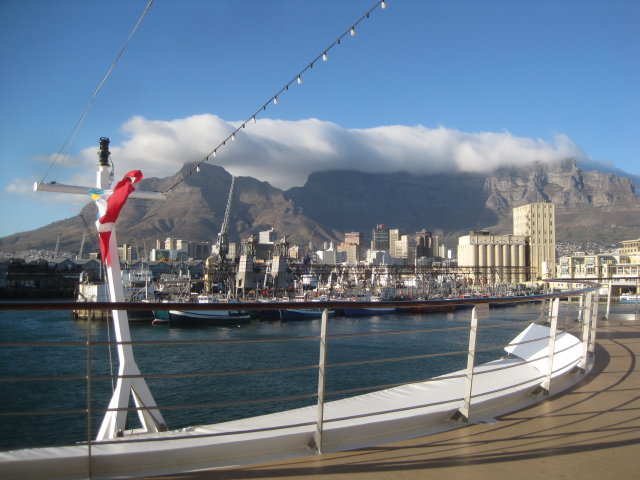We’re stuck in Cape Town.
More accurately, we’re stuck in the harbor because the high winds of yesterday evening have persisted and our relatively big ship is not allowed to try to make its way through the gateway of the inner harbor. (Cape Town plans a new passenger terminal and harbor for bigger ships. Ours is nearly at the limit of size it can handle now in the close-in jetty that allows for easy access to the Victoria and Alfred [sic] wharf. The Queen Mary, many times our size, had to disembark its passengers in a more industrial section of the port the day before we arrived.)
In the morning, I take a photo of our flag flapping in the breeze and the “tablecloth” that frequently settles over Table Mountain before winds and warmer air disperse it during the day. The “tablecloth” can make a hike up and around the top of Table Mountain a hazardous prospect.
Despite the later departure, none of us are allowed off the ship because we’ve been cleared by immigration for departure the previous evening. I just wish we could send out for good coffee. Classes take place as usual but otherwise we spend most of the day waiting for winds to die down. It doesn’t bother the many sea birds and seals who continue to perform their antics for us in the harbor waters while we try to remain focused on coursework. In late afternoon, nearly 20 hours later than planned, the tug boats finally tow the ship out. Our ship gives a farewell blast that never fails to scare the daylights out of those on deck watching us sally forth and we are on our way to Ghana in West Africa.








